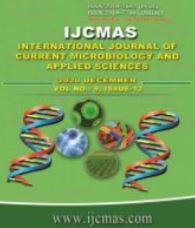


 National Academy of Agricultural Sciences (NAAS)
National Academy of Agricultural Sciences (NAAS)

|
PRINT ISSN : 2319-7692
Online ISSN : 2319-7706 Issues : 12 per year Publisher : Excellent Publishers Email : editorijcmas@gmail.com / submit@ijcmas.com Editor-in-chief: Dr.M.Prakash Index Copernicus ICV 2018: 95.39 NAAS RATING 2020: 5.38 |
A study was conducted to evaluate the clinical effectiveness of a herbal preparation, in crossbreed cattle, affected by warts. The incidence of warts (n=13) was higher in females (92.3%) than males (7.69%) and younger animals were affected more (61.5%). The wart-lesions were found to be more in the teats (30.7%) and neck (23.07%). The time needed for the healing of warts was recorded individually in all the cattle under study, of which six cattle (46.1%) were observed for 4 months. The herbal paste was made freshly of Euphorbia hirta latex and leaves, Allium sativum bulbs, Musa paradisiaca peel, Acalypha indica leaves and Zingiber officinale rhizomes. All the animals were treated externally twice a day till the warts got completely cleared. Monitored once in ten days for signs of recovery for 60 days. By the end of second week, warts showed signs of healing to the herbal treatment. The overall success rate was achieved in 11 (84.6 %) cattle with a mean recovery period of 28.3 days. This real-time field study, has proved that this herbal remedy was useful in the treatment of warts in cattle, in a stand-alone mode obviating the use of any synthetic chemical(s) and also found to be very economical for the farmer(s).
 |
 |
 |
 |
 |